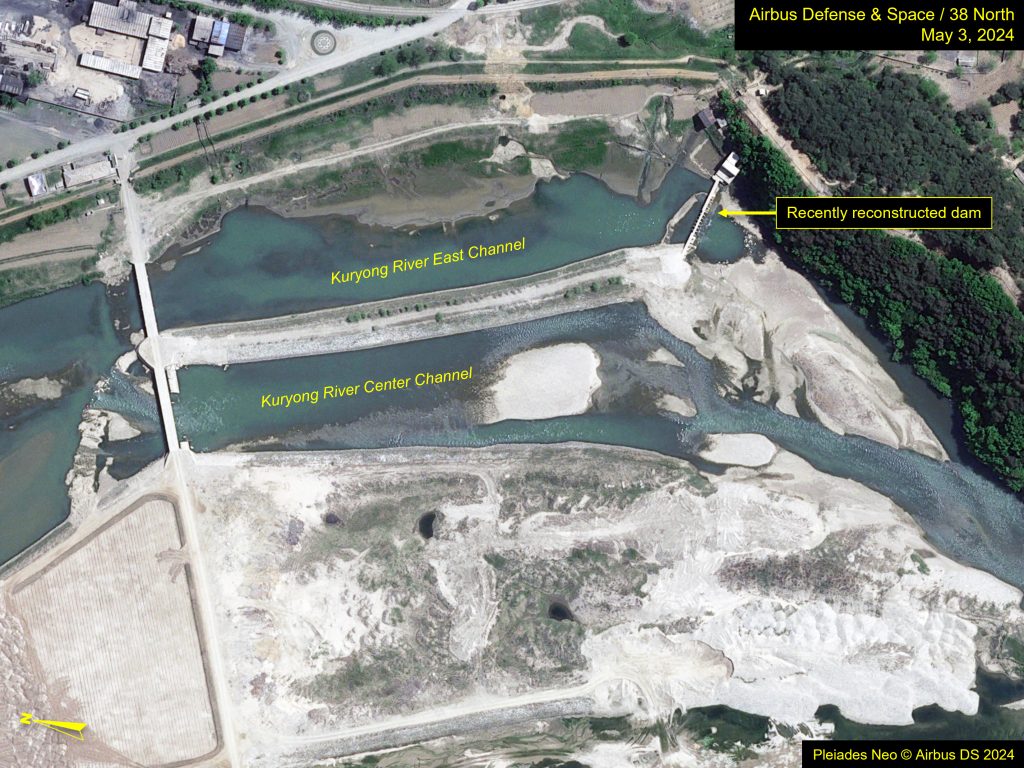Yongbyon Nuclear Scientific Research Center: Construction at the Radiochemical Laboratory
Commercial satellite imagery of Yongbyon Nuclear Scientific Research Center shows activities continue at a steady, deliberate pace, with construction activity observed throughout the site.
Renovations have been underway at the Radiochemical Laboratory’s (RCL) Thermal (Steam) Plant since late March, including replacement the or refurbishment on at least three steam boilers, as seen through roof work. Until this work is finished, no reprocessing can take place.
At the 5 MWe Reactor, water discharge has been intermittent in recent months, suggesting a refueling operation is likely underway. Continued intermittent water discharge from the Experimental Light Water Reactor (ELWR) suggests the facility is still conducting pre-operational testing. It is unclear when this might transition to operational status.
Radiochemical Laboratory
Imagery since early March shows work underway to replace the roof of the Thermal (Steam) Plant. Through the open roof, the replacement or refurbishment of three or four steam boilers inside the building, with room for an additional two, can be observed. Panels on the east side of the roof have been restored as of early May.
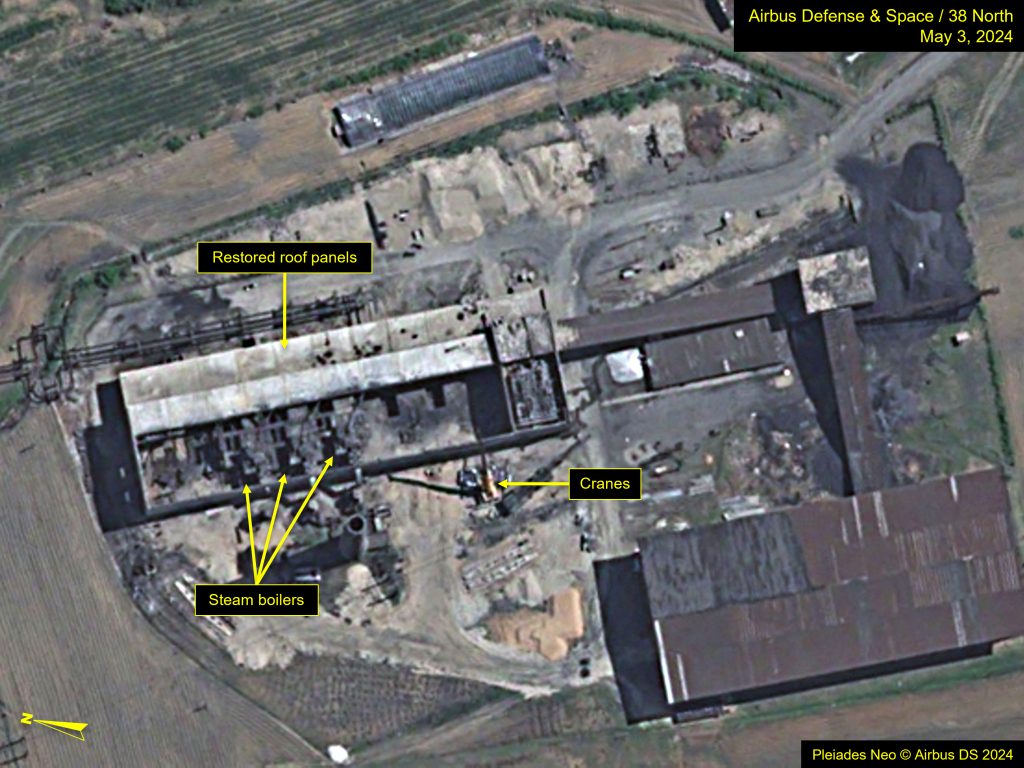
Resumption of activity at the Thermal Plant—typically observed as smoke emissions spewing from the plant’s single stack—is a key indicator of a reprocessing campaign. However, until the replacement of the steam boilers and roof construction are complete, a reprocessing campaign cannot begin. How quickly the thermal plant will be ready to resume operations is unknown. Smoke was last observed emitting from the stack in July 2021.
Reactor Area
5 MWe Reactor
The discharge outflow linked to the 5 MWe Reactor was not observed on imagery from April 4, but had resumed by April 29. Pauses of warm water discharge previously took place in late March 2023 and again that April, suggesting a break in the plant’s operations. This pattern indicates a refueling operation—where spent fuel is removed and fresh fuel is loaded—may be underway. It could also be possible that the cycles of water outflow are a result of maintenance and safety adjustments to the reactor, though the time in between may be lengthier than what this type of activity would require.
Construction materials and vehicles have been observed outside of the 5 MWe building, particularly from early March to early April of this year.
ELWR
Imagery from April 26 reveals outflows from the ELWR that stopped between March 10 and 17 have resumed, supporting previous assessments that the reactor is not yet operational. Periodic stopping and starting of outflow have been observed since October 2023. A strong outflow of warm water began from the southernmost discharge point and continued uninterrupted until mid-March when it ceased. Discharge resumed by April 26.
This activity suggests a pattern of testing the system before the ELWR becomes operational. Infrared imagery would be required to closer pinpoint how close to full capacity it is running. During this pre-operational phase, non-nuclear test runs are conducted at design temperature, pressure, and flow rates until an issue—such as a leak or malfunction—occurs. The error is then repaired, and the cycle completes until another glitch. This process can be long and drawn out, which likely explains the length of time that outflow has been noted, stopping and starting over an extended period. As the ELWR is North Korea’s first effort at building and operating a light water reactor, this process will likely be conducted systematically and cautiously.
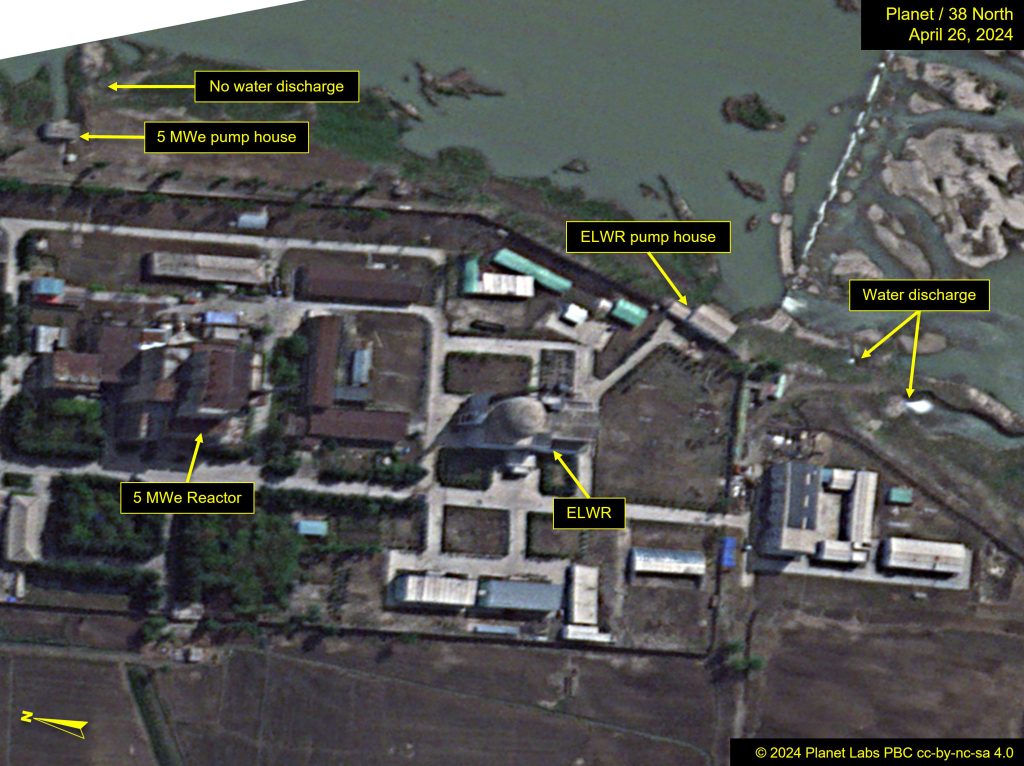
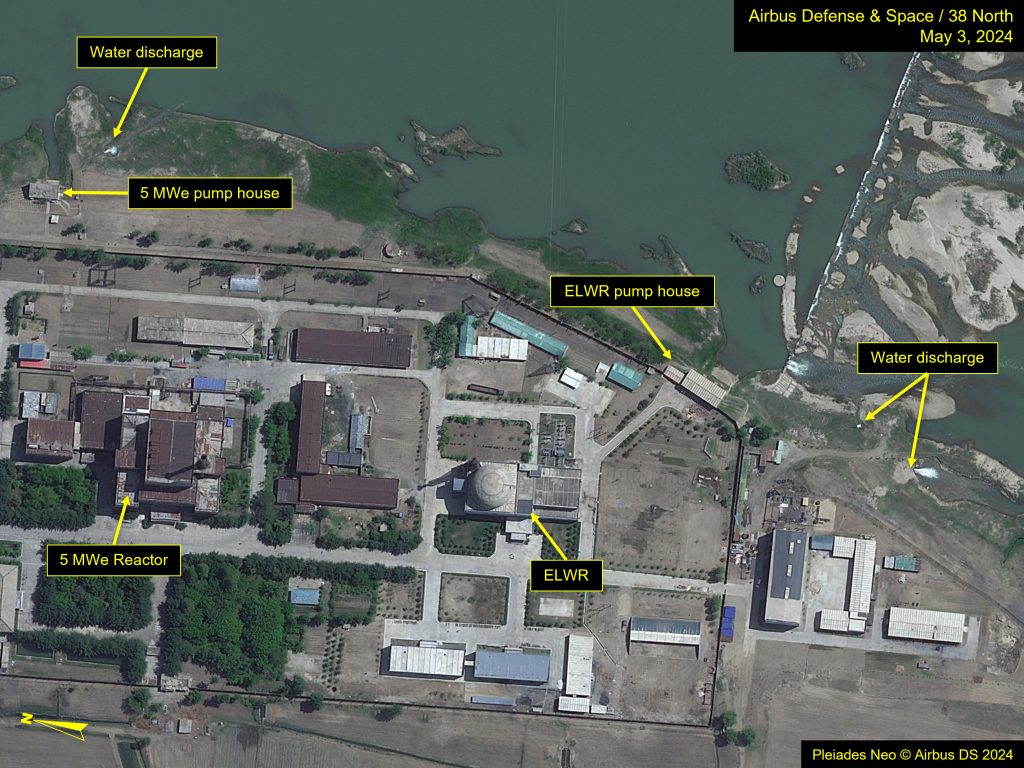
Uranium Enrichment Area
Refurbishment around the uranium conversion area has been underway since 2019 and appears to be slowing or nearing completion. On imagery from May 3, construction materials at the UO2 to UF4 building, previously observed scattered throughout the area adjacent to the complex, have largely been removed or relocated. Piles of aggregate are observed alongside the easternmost building in the series.
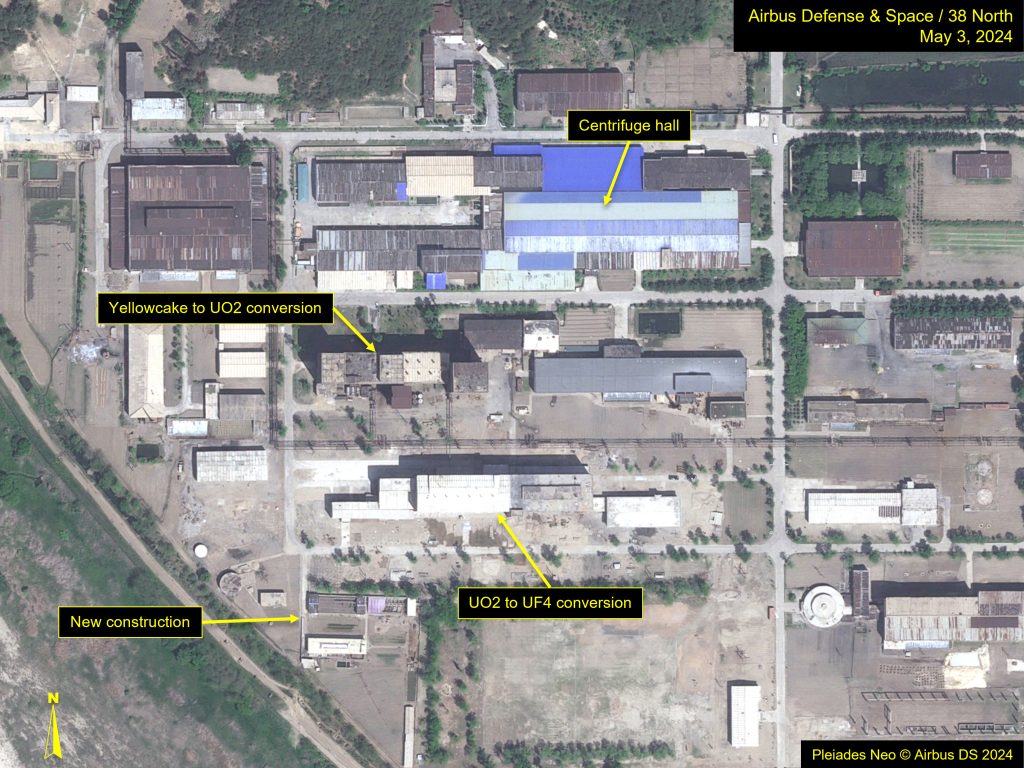
At the rail transfer point, three specialized railcars were parked. By April 5, two had departed. The third specialized railcar remained at the rail transfer point (RTP), and the two departed railcars returned to the rail transfer point by May 9. As covered in previous reports, the contents of these tanks remain unclear, though it is likely they transport reagents used for yellowcake, UO2, and UF4 conversion.
While an unusual occurrence for just one specialized railcar to remain at the RTP, this is the second year a car has been left behind for a few months during the spring. In 2023, one specialized railcar was left behind until the two others returned to the RTP in in June. All three then departed the site. The regular, cyclical arrival of reagents by rail from Manpho Unha Chemical Factory further suggests ongoing enrichment operations.
A liquid tank car was observed at the RTP on imagery from April 26, but had departed by April 29.
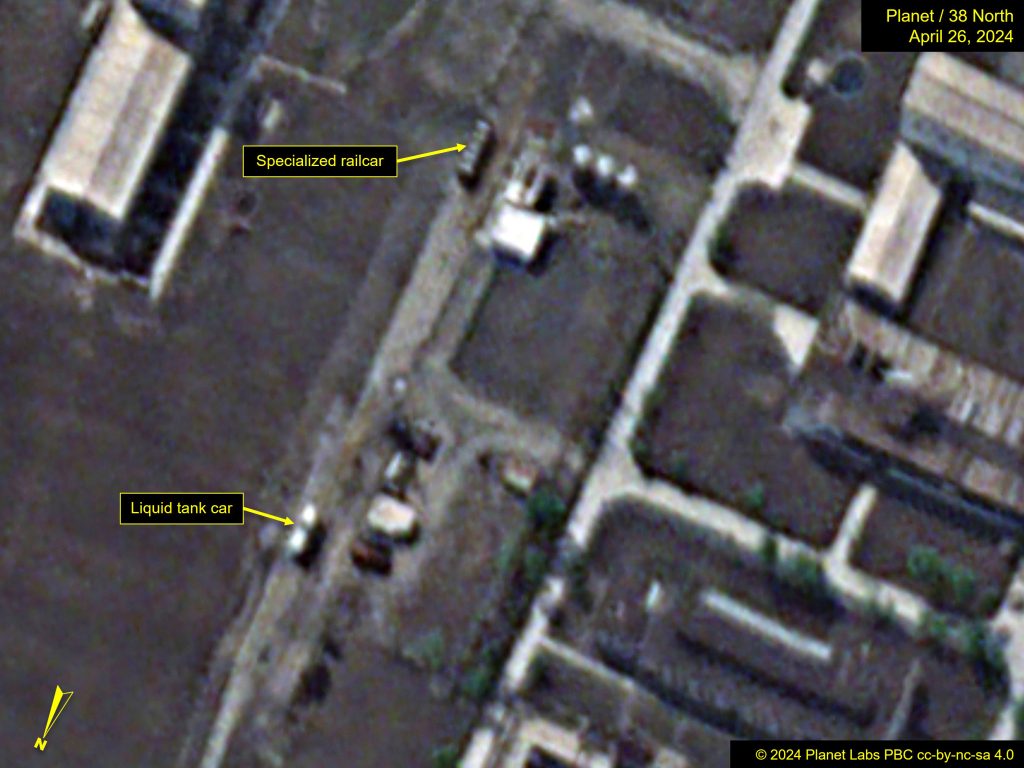
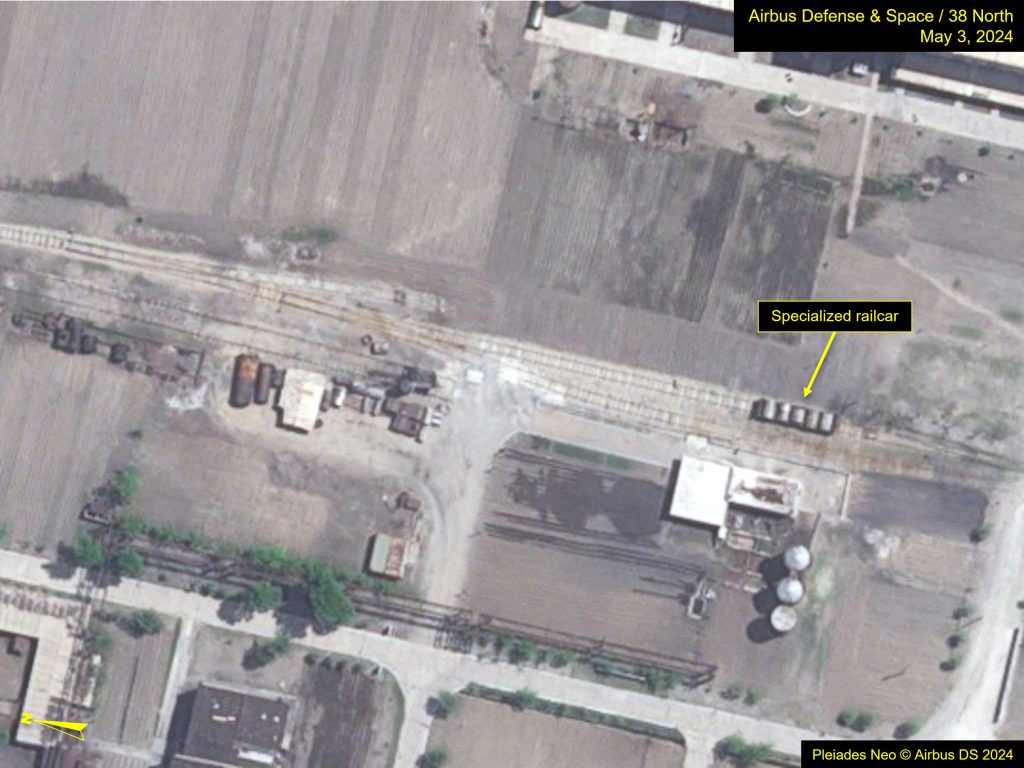
Other Site Activity
Work continues on the dam and causeway area located west of the RCL complex, including reconfiguring the three-channel island to a two-channel island. Efforts to control and tame the flow of water will be tested during the upcoming rainy season.
